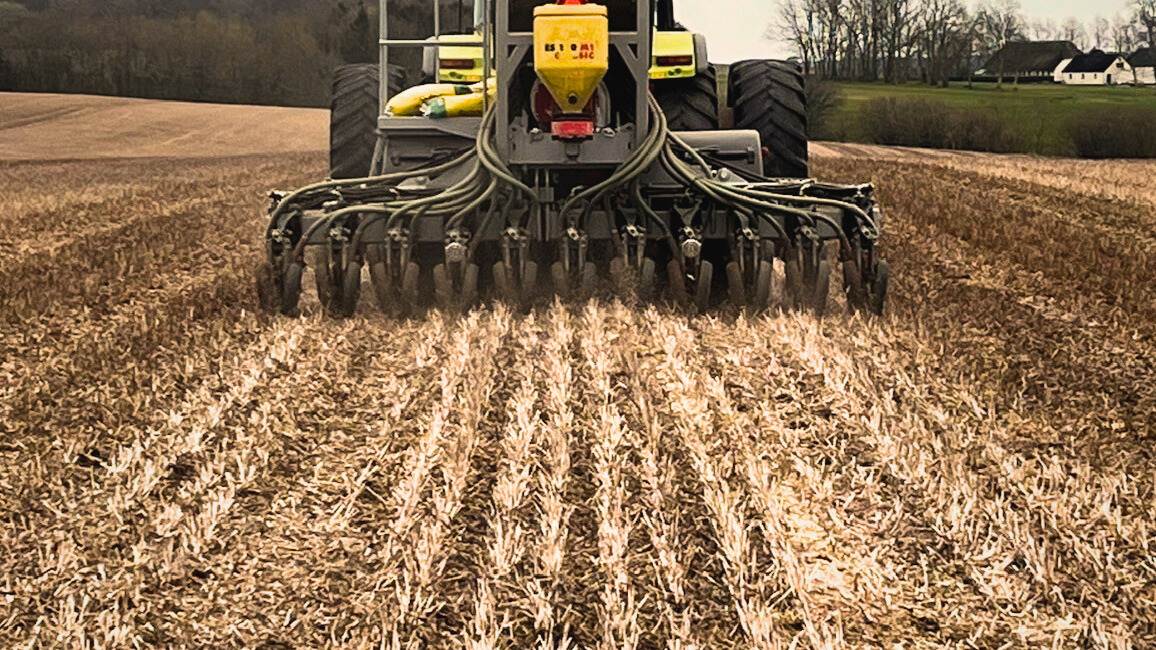The principles of direct drilling
Direct drilling is a convenient way to establish your crop. It can save time and costs, and it’s good for the soil. During direct drilling, seeds are placed in the stubble of the previous crop without any prior soil cultivation. This leaves the soil pores intact, conserves soil moisture, and prevents germination of the soil seed bank. Minimum soil disturbance is a key principle of regenerative agriculture and is a great way to cultivate a healthy soil.
Direct drilling has many benefits but how do you make sure the conditions are optimal?
“Typical issues farmers face when they want to do direct drilling are problems with wet soil, cold soil temperatures because of the layer of straw from the previous crop that prevents the soil from heating up as fast as a plowed field, and that the crops emerge later” crop advisor Kristian Thomsen states.
Luckily, there are ways to work around all of these issues.
To use direct drilling, the soil needs to be dried up enough, so the soil pores won’t be damaged when driving in the field and create water-logging. It is better to wait until the soil is dry enough than to establish early and risk closing the soil pores, preventing water from draining.
You can reduce the risk of wet soils in the spring if you make sure you have a good soil structure with a large earthworm population to create macropores, which will reduce waterlogging and create better drained fields. Establishing a good cover crop with taproots in the fall will also help draining the fields in the spring.
If you have problems with cold soil because of residual straw from the previous crop, it can be beneficial to remove the layer of straw with a straw rake, allowing the soil to warm up more quickly.
“Direct drilling can cause the crops to emerge a little later than in plowed fields but this can be made up for by increasing the number of seeds when sowing. The individual plant might grow less bushy, but an increased number of plants will compensate for this” Kristian explains.
Preparing a good seedbed is essential for a well-established crop when using direct drilling to make sure the seed is placed precisely and has good contact with the soil. Choosing the right seed drill for the field is important. There are two types of direct seed drills – tine drills and disc drills. With a tine drill, a seed tine is pulled through the soil and the seed is placed behind the tine. With a disk drill, a roller disc cuts a groove in the ground where the seed is laid and the groove is pressed in again. There are pros and cons to both types.
An advantage of the tine drill is that it works well to place seeds underneath the surface of crop residue, which increases the likelihood that it will be placed in direct contact with the soil. The tine drill also creates mineralization in the groove which can help earlier germination of the seeds. The cons, however, are that there is a risk that residual plant material on the field can be dragged along with the drill, and that the tine causes slightly more soil disturbance, risking larger germination from the soil seed bank.
With disc seed drills, a disc cuts through both crop residues and cover crops, which makes it better suited for fields with larger cover crops, but there is an increased risk of hair-pinning (crop residue being pushed into the seed slot) which can compromise the seeds’ contact with the soil.
If you are just starting out with direct drilling, it can be a good idea to start with crops like peas or fava beans that have large seeds and lots of germination potential since they are less sensitive to seedbed issues. Spring barley on the other hand requires very precise drilling and optimal conditions to become well-established.
Are you eager to get started with direct drilling or do you have questions about the methods you are currently using? Contact crop advisor Kristian Thomsen at krt@agroganic.com if you would like to know more.

